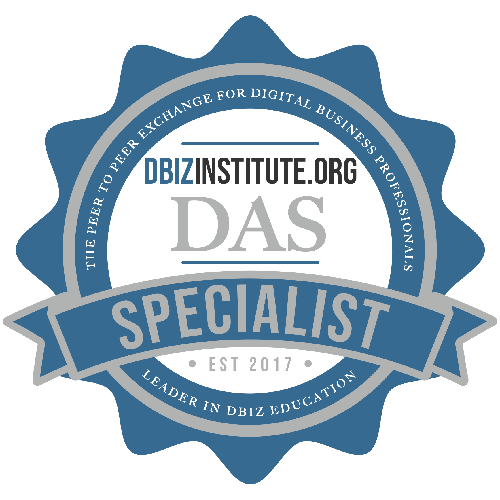Home / Resources
Resources
Discover a Wealth of BPM Knowledge and Expertise at BPMInstitute.org!
Introducing the Jiffy Lube Metaphor of Continuous Flow
Are your software implementation efforts woefully behind? Are your development schedules constantly being compromised by increased demands from other business units?
Does SOA Kill Capacity Planning?
In theory, computing capacity should be like water, if you need more just leave the tap running a little longer. All manner of virtualization, grid and attached processing technologies are being developed and deployed in an effort the make this theory a reality. Therefore it would be easy to assume that capacity management would not be an issue for SOA. Just deploy the services and SOA infrastructure on your tap water computing power with a few automation policies and capacity management ceases to be an issue.
What a lovely fantasy.
The real world, unfortunately, does not work that way.

Business Decision Management – Part 2
In Part 1 we discussed using business rules and analytics in the context of Business Decision Management to automate and improve operational business decisions. There are many ways to bring business rules and analytics to play in information systems and they can be used to improve business processes, Business Decision Management is emerging an extremely productive and effective method.
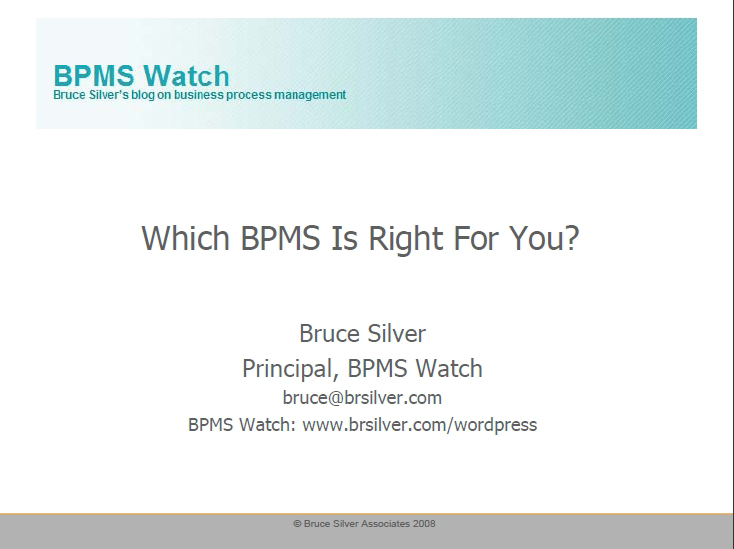
Which BPMS is Right for You?
Over the past 12 months, we reviewed 11 leading BPM Suites using a common analytical framework, and published the results using a common outline as The BPMS Report series, available for free from BPMInstitute.org. Based on that research, we now offer a comparative scoring of these offerings. Each BPM Suite was rated for both human-centric and integration-centric processes, and the human-centric evaluation was further broken out into two subclasses, production workflow and case management.

A 15-Minute Guide to Transactional Content Management
With Transactional Content Management, organizations can benefit from the use of BPM as well as imaging, document management and capture technologies to reach higher levels of operational agility, drive innovation and reduce operational costs across functional areas. In about 15 minutes, this guide will define transactional content management, explain why it’s important, outline the benefits, suggest a deployment framework, and provide resources for you to learn more.
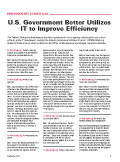
U.S Government Better Utilizes IT to Improve Efficiency
The Federal Enterprise Architecture provides a platform for cross-agency collaboration and a discipline to guide IT investments, helping the federal government achieve its goals. BPMInstitute.org talked to Richard Burk, chief architect in the Office of Management and Budget, about the initiative.
![]()
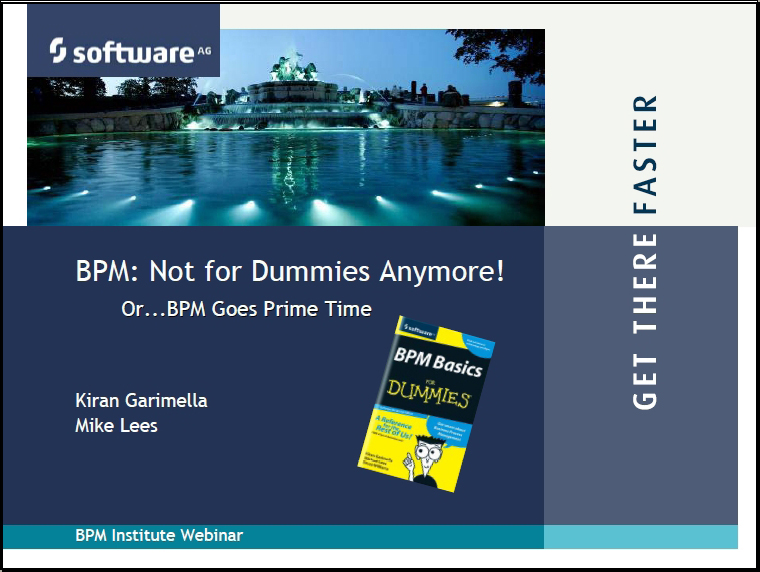
BPM – Not for Dummies Anymore
BPM has evolved past the hype by delivering impressive business results. See how companies have solved business problems quickly through their BPM platform, and how some companies are pushing the envelope by taking BPM to the enterprise level.

BPMS Watch: How Much BPMN Do You Need?
In March, Michael zur Muehlen of Stevens Institute of Technology and Jan Recker of Queensland University published an article based on their analysis of BPMN diagrams collected in the wild, as it were, from consultants and practitioners.
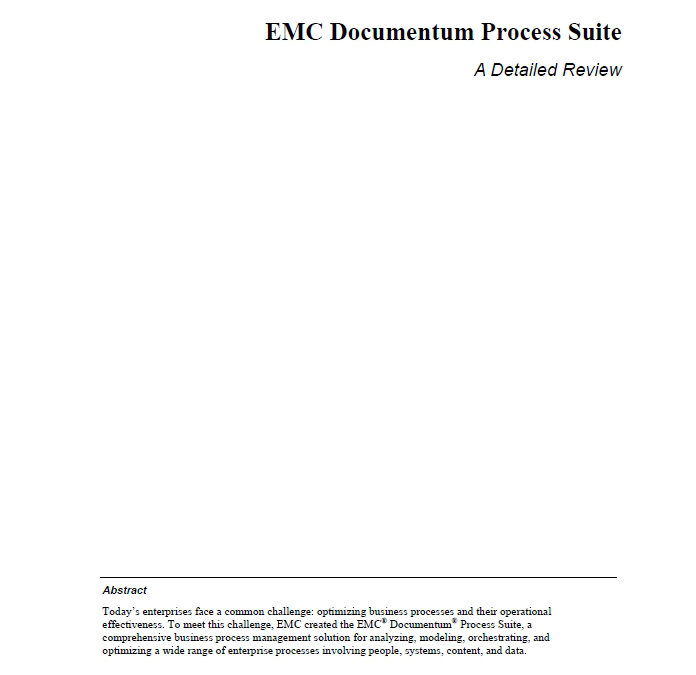
EMC Documentum Process Suite 6.0
The 2008 BPMS Report by Bruce Silver, a leading independent industry analyst covering BPM technology, objectively evaluates the EMC Documentum Process Suite 6.0, describing it in depth and evaluating its strengths in four distinct process types or “use cases.” The report covers the product suite in 34 pages, loaded with diagrams and screenshots.
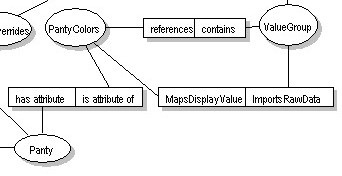
Adaptive Software – Systematically Responding to Emergent Environmental Change
This article is the first in a series of four to address the role of decisions and rules as an integral part of systems designed to adapt dynamically to changing environments.

Business Architecture: Scaling SCOR® to meet your needs
I have been in this business for 27 years and somehow never managed to do any supply chain work. So when a client asked me what I knew about the Supply Chain Operations Reference-model (SCOR1 ), developed and endorsed by the Supply-Chain Council (SCC), I had to admit “nothing.” So, being a good consultant, I set about familiarizing myself with SCOR: I did some reading, downloaded some PDFs, and attended a workshop. Admittedly, this does not make me an expert. It does not even make me particularly knowledgeable. It only makes “familiar” with SCOR.
Scrumming for SOA
In today’s market place of continuous change, enterprise agility is the ubiquitous fuel for continuous competitive advantage. But agile enterprises demand not only agile infrastructures and systems, but agile processes as well. Clearly, service based architecture has emerged as an enterprise-wide architectural blueprint and agile development is shaping up as a formidable development methodology.

Business Architecture Survey Results
In December 2007 through January 2008, the BPM Institute surveyed the Business Architecture Bulletin list to gain insights into the nature of business architecture work. The survey’s goal was to identify who is performing business architecture work, ascertain related goals, determine the nature of the work being performed and identify service and tool preferences.

Capturing Ideas
For fun, I recently googled the aphorism, “Good ideas are a dime a dozen”. There were over 3,400 hits. This old cliche is on too many people’s minds! Most of the occurrences I looked at were fairly recent, from business or marketing articles, and most continued on with a “but …” line that suggested that what is really rare and valuable is the agency or person who can bring an idea to realization.
Clearly, there is recognition that getting a glimmer of an idea is not enough.

Taking the Process Map to the Next Level – The Visual Analysis Map
What if you could create a visual that showed your data gathering, problem solving and analytical thinking analysis all in one place? What if you could have a map which would enable you to talk to stakeholders and executives and get their input on problems, time delays, and key quality issues? That’s what the Visual Analysis Map can do for you and your team.
Bioteams: The Next Frontier of Business Process Management
Support for collaboration is the hot discussion in BPM circles these days, and for good reason. It’s the human-to-human interactions of teams that count when it comes to innovation and agility. The age of the monolithic, vertically integrated company is long gone. In the interconnected world of the 21st century, you and everyone you work with must be able to function in and through internal and multi-company teams, and must also grasp what the latest concept of “team” really means.

Transactional Content Management: The Critical Infrastructure for Managing Horizontal Processes Across the Organization
We all know how processes typically emerge in an organization. They start in one area or department and are designed to solve a specific problem. We call this the functional-centric process model; it’s characterized by transactional processes being structured, managed, and measured via the functional or departmental unit. While this model addresses an immediate, department-level requirement, in the long run it can create a much bigger mess at the corporate level.
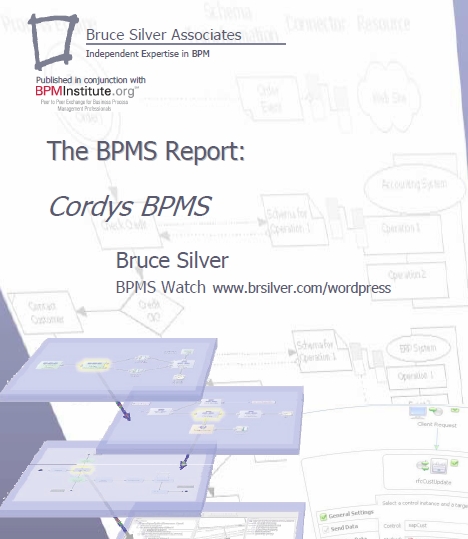
Cordys BPMS
Cordys was founded in 2001 by ERP pioneer Jan Baan, who remains as Chairman and a major stockholder. Cordys launched its first product in 2004, and today has around 40 customers worldwide. After initially focusing on a few big customers, the company is now expanding and working to establish a larger global presence based on BPM firmly rooted in SOA, leveraging a $67 Million investment by Argonaut Private Equity in April 2007. Cordys today has around 550 employees, over half of which are in R&D. Cordys is headquartered in the Netherlands, with a large development facility in India and offices in the US, Europe, and China.

Oracle BPM Solution v10.1.3
Oracle is well known as a world leader in database management and enterprise application software, and more recently as a leading supplier of application server and integration middleware. Following the acquisition of Collaxa in 2004, Oracle BPEL Process Manager became one of the most widely used standards-based process orchestration tools and a central component of the company’s SOA Suite, part of the Oracle Fusion Middleware platform. Still, the company was not ready to claim it offered a true BPMS until the announcement of Oracle BPA Suite in 2006, based on an OEM version of IDS Scheer’s ARIS platform with Oracle SOA extensions. Oracle’s BPM Solution, announced in Q3 2007 and reviewed here, combines BPA Suite and SOA Suite linked by shared metadata to support business-IT alignment and collaboration in the process lifecycle.

Singularity Process Platform 3.5
Singularity is a private company focused on BPM solutions for the capital markets, government, and telecommunications sectors. Founded in 1994 with headquarters in Ireland, Singularity now boasts 200 employees and offices in New York, London, Singapore, and Hyderabad. The company’s BPM Suite, called the Singularity Process Platform, was launched in 2000 and is now at version 3.5. In addition to the core platform, Singularity offers specific industry solution accelerators such as customer onboarding and “Know Your Customer” for financial services, customer provisioning and billing for telco, and benefits case management for public sector. Solution delivery is based on a rapid iterative methodology called ASAP featuring competing “hothouse” design proposals.













